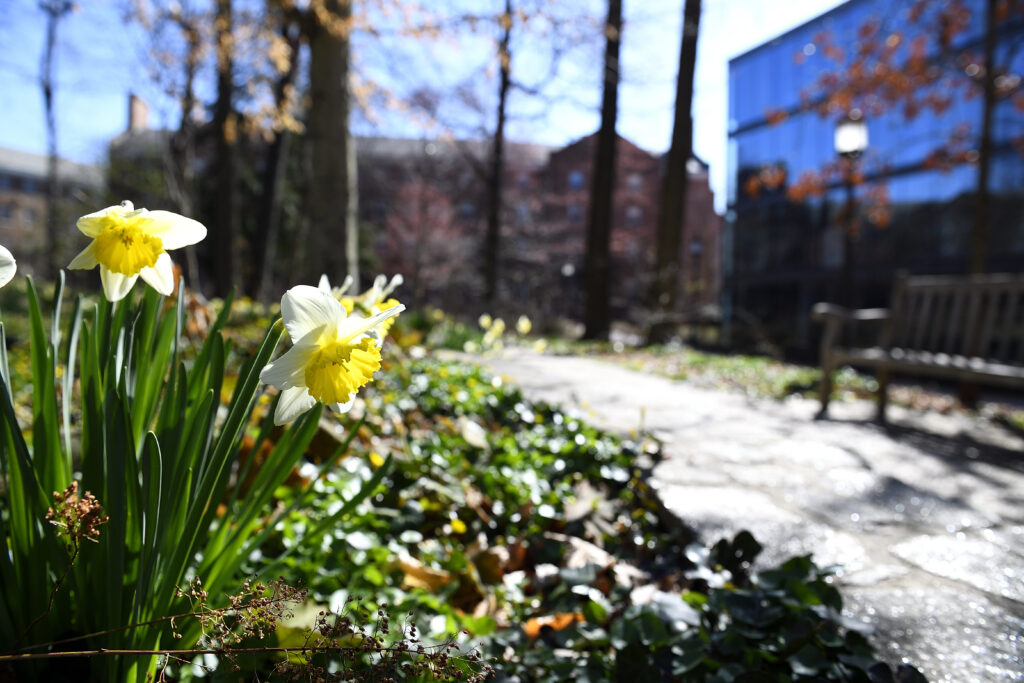
Working with mentors really changes the game. That’s why when I was looking for summer opportunities after my first year at Hopkins, I was particularly looking for programs and internships where I can learn from people who are the best in their field. In a session about research at Hopkins in my first week, I came to know about the Bloomberg Distinguished Professor Research Program (referred to as the BDP Summer Program from here on). A Bloomberg Distinguished Professor (or BDP) is a cohort of professors who work on ambitious interdisciplinary problems. The idea is that you get to work with a BDP for 10 weeks during the summer as a part of a paid fellowship. As soon as I heard of this program, I knew it would be the right fit for me.
When the time to apply came around in November, I quickly started drafting an application. It was my first time applying to a competitive summer research program so I knew I would benefit from having a second pair of eyes look over it. Hopkins has many resources to help with writing, including the Writing Center (at the beautiful Hutzler reading room in Gilman Hall) and the Technical Communications Lab. For this opportunity, the best resource was HOUR (the Hopkins Office of Undergraduate Research). Through their website, I joined drop-in office hours and booked an application review. An HOUR staff member spent some time with me, going over and annotating my written application. The application entailed my research CV and several personal statements (essays about why I want to work with the professors I selected and why I would be a good fit for their research groups). I got to select three professors with whom I was interested in working according to their research areas. Opportunities like this are very accessible at Hopkins, both the application and the review sessions are free. After many rounds of revisions, I finally clicked on the apply button during intersession (a period during winter break where students can take fun classes and work on projects).
Since the results of my application were not going to be out for the next few months, I just told myself to forget about the program and think ahead. This was definitely hard to do but somehow, I made it to March without worrying too much. At the point where I had nearly convinced myself I wasn’t selected for this opportunity, I got an email from HOUR! I had received the opportunity to work with Professor Paul Ferraro on his research about causality in resilience studies. I was elated! Causality in resilience studies means using math to see if there is a cause-and-effect relationship in environmental studies. For example, investigating whether we can truly say that some factors lead to an increase in the risk of forest fires or other environmental phenomena.

It wasn’t until summer finally rolled around that I realized how much one-on-one mentorship I was going to get through this project. During our first week, Professor Ferraro trained me and the two other BDP awardees in everything we needed to know to get started. This was a crash course in causal inference (the study of determining cause and effect relationships), how to read and analyze papers on causality in policy, and other topics. Every day, we would get a couple of hours of lecture-style training, and this was incredibly useful for our project in the weeks to come. Our project was about analyzing how papers in the resilience literature were applying and making causal claims. In very simplified words, this means evaluating whether claims that were presented as cause and effect were truly that or if they were just correlations. After training week, the other interns and I started working on sourcing papers on the subject. We went through several hundred papers and found the ones that best met our inclusion criteria. Then, we conducted a very long and thorough analysis of the literature. Through many weeks of research and iteration, we read many papers and analyzed a lot of very complex data.
One of my biggest takeaways from this experience was really understanding the research project. The journey from the research question to the data collection to analysis is long, but also essential to make good and credible claims. The best part was that this opportunity allowed me to combine my many interests. I am double majoring in computer science and economics (and have a minor in applied mathematics & statistics). I got to see all three of these in action in our work in some way or form. Our core research was based on causality in economic and environmental policy, but I also had very insightful discussions about how a similar causality concept can be applied to analyze Artificial Intelligence and Large Language Models. The papers we were analyzing may have been about social science topics, but a good analysis required a thorough understanding of the complex math and equations that were used there. This research matters because sometimes studies seem to be indicating cause and effect relationships, but in reality, the data only supports a correlation. We are essentially making sure that scientific literature is clearly communicating what the data says, and not just what the researcher is saying.
Looking back, being a part of the summer BDP program was the best way to spend the summer after my first year at Hopkins. I got to be a part of impactful research, learn a lot, and work with amazing people.




